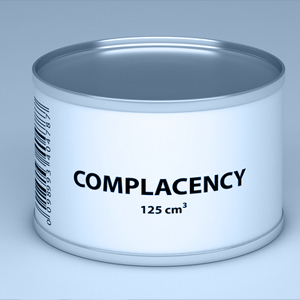Andy Paul's Blog, page 96
July 22, 2015
Accelerated Sales Hiring Strategies To Quickly Scale Your Sales Team
Sales hiring is a risky, and time-consuming task. But, if you’re trying to quickly scale the size of your sales team, you have to effectively use the interview process to discover all the critical information you need to make an optimal sales hiring decision in the least amount of time possible.
 Nailing your sales hiring the first time around with candidates who can quickly become productive is the root of sales acceleration. This means that you need to employ a sales hiring process that helps you quickly qualify the right candidates and minimizes the amount of time you invest in interviewing candidates that can’t perform as you require.
Nailing your sales hiring the first time around with candidates who can quickly become productive is the root of sales acceleration. This means that you need to employ a sales hiring process that helps you quickly qualify the right candidates and minimizes the amount of time you invest in interviewing candidates that can’t perform as you require.
Here are five interviewing strategies to accelerate your sales process for hiring the right candidates.
1. Verify First, Trust Second
An interview is no place for trust; that comes after you hire. Your priority in the interview process has to be ensuring candidates’ skills match your requirements and then verifying the track record on their resume. Every claim on a resume that is represented as fact by the candidate has to be verifiable. If it can’t, then you have to presume that it’s false. And, a candidate that has fudged their track record even a bit, has to be disqualified immediately. You can’t afford the risk that he or she might stretch the truth with your customers, too.
I recently met with a VP of Sales of a high-growth start-up who was rapidly expanding his team. I asked him if he ever hired salespeople who had not achieved 100% of quota. He said “no.” I asked if any of the resumes for the candidates he’d hired ever showed that person achieving less than 100% of quota in their prior jobs. He said “no.” So, then I asked if he were aware that studies reveal that fewer than 50 percent of salespeople achieve quota each year. He said “yes.” Then there was a long pause as he did the math. Even seasoned sales leaders need to be more diligent in their due diligence.
2. Value the Details
Details provide another objective measurement of a candidate’s suitability for your position. Sales is a detail oriented profession. It is also a profession that demands that salespeople create a strong first impression with prospective customers. Yet, in all the work I do helping clients hire sales team, it is increasingly rare for me to review a resume that is error free. Why is that? Is there any more important sales job for a salesperson than selling themselves?
I remember reading a blog post that attempted to poke fun at employers who disqualify sales candidates based on seemingly trivial details such as misplaced punctuation, typos and other errors on resumes. That author is dead wrong. Sales candidates with obvious mistakes on their resumes, mistakes that should have been caught with a minimal level of care and attention to detail, will very likely exhibit the same blatant disregard for detail in their dealings with prospects. Can you afford the mistakes that inevitably will follow?
3. Minimize Subjectivity and Focus on the Facts
Refrain from relying on the answers to opinion-based questions, such as “What are your strengths and weaknesses?” or “What are you looking for in your next job?” to form your opinion of a candidate. Instead, conduct a deep dive into the candidate’s sales performance history for the prior ten years. Go through a candidate’s resume line-by-line. Make sure that you understand the factual details and data associated with how they performed at their prior jobs. You’ll quickly know if they are being truthful. And, if they have a track record that demonstrates they can succeed at the job you have available.
4. Test for all Required Skills
Define the skills and knowledge that are absolutely required for success in the open position. Before you conduct a first in-person interview, test the candidates for the sales skills, industry expertise and technical knowledge that are required for the job. If they don’t score well on the test, don’t waste your time with an interview.
Once one of my clients was hiring a sales director. This person would manage a small team and carry a bag. The client was a small start-up and it was essential that whoever was hired into this role was self-sufficient when it came to developing proposals and tailoring sales presentations for prospects. We devised a simple test. Candidates were put into a conference room with a laptop and a product data sheet. They were given 15 minutes to create a three slide presentation to sell the product. The majority of the candidates who had been thoroughly screened over the phone and invited in for an interview either failed the test or refused to take it. A highly motivated candidate was hired.
5. Check a candidate’s references BEFORE you make a decision.
Typically, hiring managers wait to call a candidate’s references until AFTER they’ve determined which person they want to hire. The problem is that at that juncture they’re NOT interested in unearthing information that will derail their decision.
Before you decide to bring a candidate back in for a second interview, check their references. Don’t wait until after you have fallen in love with the candidate. By that time, your motivation to derail the momentum towards making an offer is diminished.
Embrace these accelerated interviewing strategies to quickly build the best sales team for you.
The post Accelerated Sales Hiring Strategies To Quickly Scale Your Sales Team appeared first on Andy Paul | Strategies to Power Growth.

July 14, 2015
Are You The Boss Of Your Own Sales Process?
Focus on controlling your personal sales process to accelerate decisions
 There is general agreement that the world of buying and selling has changed, that universally easy access to information has shifted the balance of power in any sales transaction (or purchase transaction) from the seller to the customer.
There is general agreement that the world of buying and selling has changed, that universally easy access to information has shifted the balance of power in any sales transaction (or purchase transaction) from the seller to the customer.
And, yet, there still remains a major emphasis in selling today on the notion of controlling the sales process, which is just a euphemism for controlling your prospects. (Google “control the sales process” you’ll get 49,400,000 results.) However, there is perhaps no bigger myth in sales today than that of a salesperson controlling their prospects.
Many companies and salespeople still nominally employ traditional “control-oriented” sales models. In these models the prospect moves through an unvarying sequence of steps from Initial Interest to the Decision. Every sale is the same. Or is supposed to be. It’s easy to understand why salespeople gravitate towards this approach to selling. Maintain the illusion of being in “control” is comforting. It’s a hard habit to break. Even though sales doesn’t work that way in practice.
Think about the sales opportunities you work on. Do they all unfold the same way? Does each prospect require exactly the same number of sales interactions to reach a buying decision? Were these sales touches always in the same order? Do the prospects ask the same questions and require the same information from you at exactly the same step of your sales process? Of course not.
I thought about this while taking my dogs for a walk (in case you’re wondering why there is a picture of a dog straining on a leash at the top of this article). Every walk follows pretty much the same route and is just like every other walk that preceded it. Unless, Riley and Nico decide that a compelling new smell emanating from the bushes demands to be investigated. Or, that some pigeons have wandered too close and need to be scattered by a lunge at the end of the leash. Or, that three yappy purse dogs straining on their leashes on the other side of the street need to be greeted and sniffed from stem to stern. Yes, our walks start at Point A and end at Point B, and while they may seem the same to me, Riley and Nico are alert and receptive to the differences and, to them, every walk becomes a unique journey.
Every sales opportunity with a prospect is also a unique journey. What happens when a salesperson is confronted with a sales process that doesn’t conform to what they’ve been trained to expect? Too often, they act as if nothing happened and try to move forward with their sales process. At which point, the prospect’s buying process with them will come to a complete halt. Because, buyer’s have a process, too. And, they won’t move from one step of their decision-making process to the next with unanswered questions.
In fact, sellers should keep in mind that buyers have a buying process for every alternative solution that they’re investigating. While they may be stuck on Step 2 of their process with you, waiting for you to answer a particular important question, they will have moved on to Step 4 with your competitor who was more responsive to the them and provided the answers they needed in Zero-Time.
Instead of thinking about controlling the sales process, which typically is a euphemism for controlling the actions of your prospects, focus on controlling your individual sales process. What this means is controlling how you respond to the requirements of your prospects for the information they need to make a fast, favorable decision.
Effective sellers today are using responsiveness, content and speed as competitive advantages to help their buyers make informed purchased decisions in the least time possible. Notice the emphasis on “help their buyers.” Selling must be a service in support of the buyer. And service, by definition, is not about control. It’s about responsiveness. It’s about giving, not holding back.
// ]]>
The post Are You The Boss Of Your Own Sales Process? appeared first on Andy Paul | Strategies to Power Growth.

July 13, 2015
What The Tour De France Can Teach You About Winning More Sales
Improving just 1% will help you win you more deals.
 If you watch the Tour de France, you’ll quickly realize that professional bicycle racing is a highly technical sport. The technology involved in the design and construction of the bicycles, as well as the advanced technology employed to train and measure the fitness of the riders themselves, have evolved to the point where there are no sizable breakthroughs left to occur that will enable one team to enjoy a sizable, sustained competitive advantage over its competitors.
If you watch the Tour de France, you’ll quickly realize that professional bicycle racing is a highly technical sport. The technology involved in the design and construction of the bicycles, as well as the advanced technology employed to train and measure the fitness of the riders themselves, have evolved to the point where there are no sizable breakthroughs left to occur that will enable one team to enjoy a sizable, sustained competitive advantage over its competitors.
I first published this article about four months ago. But after watching the exciting action of Team Time Trial stage of the Tour de France yesterday, in which the five riders of Team BMC defeated Team Sky by a mere 0.62 seconds over a 28km course, I thought it would be useful to provide my readers the opportunity to learn its lessons again.
This razor thin margin of difference between the winner and the second place team is the same competitive dynamic affects most sellers today. The pace of technological innovation has made it extremely difficult for any one company to establish and maintain any degree of meaningful product or service differentiation. Increasingly, when customers survey vendors to evaluate new products and services for purchase they see a field of competitors that virtually all look alike. The question is: how do you breakthrough?
The Aggregation of Marginal Gains
Dave Brailsford, manager of the British-based Team Sky, aspires to have his riders win the Tour de France. In preparing for the 2010 Tour de France, he decided that the path to victory would be based on his theory of the “aggregation of marginal gains.” What he meant was that since there were no secrets or revolutionary innovations to be made in the sport, his focus was going to be on making continuous small, one-percent (1%) improvements in every element of his team’s process for preparing its riders, bicycles and strategies and executing its race plan in order to gain even the slightest advantage over its competitors.
Brailsford believed that if his riders continually focused on improving every aspect of their daily routine by 1% then they would develop a small, but sustainable, advantage over their competitors. Team Sky applies this level of discipline to every aspect of their daily routines, both large and small, including their fitness, their aerodynamic positioning on their bike, their recovery and sleep habits, their personal hygiene to prevent illness and lost training time and even to the clothing and helmets they wore during races. And, it’s paid off. Sky’s lead riders, Bradley Wiggins and Chris Froome, won the Tour de France in 2012 and 2013 respectively. And, a year after being knocked out of the Tour by injury, Froome currently wears the famous yellow jersey of the race leader after the Team Time Trial.
What’s Your Margin of Victory?
Let me ask you. How much did you win your last order by? Were you 5% better than the competition? 10%? 25%? Do you even know?
In the Tour de France, which is contested over 21 days and during which the riders race over 2000 miles, the average margin of victory that separates the winner and the 2nd place finisher is almost always less than one-tenth of 1% of the total elapsed time of the winner. (In the 2014 Tour de France, the winning rider, Vincenzo Nabali of Italy, crossed the finish line more than 7 minutes ahead a the second place finish, a modern record for the winner’s margin of victory. However, against Nabali’s winning time of 89 hours and 59 minutes, that represents a margin of victory of slightly more than one-tenth of 1%.)
As I describe in my most recent book, Amp Up Your Sales, sellers need only be 1% better than their competition in order to win an order from a prospect. Perhaps even less than 1%. In crowded, competitive markets where buyers struggle to draw distinctions between sellers, they look beyond the product or service they are evaluating for tiebreakers that provide value to them.
Marginal Gains for Sellers that Add Value
Here just a few examples of some marginal gains that you can aggregate into your sales process establish a 1% advantage over your competitors:
1. Promptly Follow-up Sales Leads:
According to research from Insidesales.com, a very large fraction of inbound sales leads, reportedly up to 73%, are never followed up. Many buyers have given up on the idea that a salesperson will ever respond to an inquiry. But the salesperson who follows up in a responsive fashion will be perceived by the buyer as providing value and will create a marginal gain that separates him or her from their competition.
2. Accelerate Your Responsiveness:
It is not enough to just make the effort to respond. Being responsive in sales means that are quickly providing the information that your buyers need to move forward in their decision-making process. You have to continually tweak and refine your sales processes in order to find ways to respond faster and with more valuable questions, answers and insights. More often than not it will be the first seller with the answers who wins the deal.
3. Maximize The Value You Deliver on Every Sales Touch:
The standard for every sales touch, no matter how big or small, is that it must deliver something of value to the prospect that helps them move at least one step closer to making a decision. Your prospects invest their time in you. If a prospect becomes trained to expect value from you in each and every sales touch, then that represents a marginal gain that provides a real competitive advantage to you.
4. Invest Your Time to Acquire Specialized Knowledge:
Increasingly buyers want to deal with salespeople who have the specialized product knowledge, industry expertise, business insights and acumen to help them develop a better solution to the problem they are trying to solve. Become the salesperson who invests 1% of his or her time (just 24 minutes per week every week) to develop their knowledge, skills and expertise. Read books and blogs, attend webinars and conferences and spend time with your company’s technical experts. It takes just 1% of your time to become a sales resource that your prospects will recognize as a source of value that is worth the investment of their time. That will set you apart from nearly all of your competitors.
In the end, it is all about having the discipline and the commitment to take the necessary steps to continually improve all aspects of your selling. What will it take to make them 1% better? Because, in the end, you only need to be 1% better than the competition to win your customers’ business.
// ]]>
The post What The Tour De France Can Teach You About Winning More Sales appeared first on Andy Paul | Strategies to Power Growth.

July 7, 2015
Are You Qualifying The Right Prospects?
When you’re qualifying new prospects, what’s the standard you use to determine if they’re an ideal fit for the product or service you’re selling?
 Is the prospect looking to buy a product or service that is generally like yours? Or, do they need exactly the value that your product or service can provide?
Is the prospect looking to buy a product or service that is generally like yours? Or, do they need exactly the value that your product or service can provide?
Does the prospect fit your ideal customer profile? Or, are you continuing to invest your time in this “prospect” merely because they will talk to you?
There are two very distinct approaches to qualification that yield two very different sets of prospects. And, results.
Are you swiping right too often?
The default for most salespeople is to approach qualification from the perspective of qualifying the prospect to buy a product/service that is similar to theirs. Any prospect that on the surface looks like they could use your product are automatically considered to be qualified. In this case, appearances trump everything. So, swipe right and they become a prospect.
Except, they’re really not. This dating app approach to qualification means you are more focused on a classic “sales is a numbers game” approach to selling. ‘Let’s just fill up the funnel and see how many orders we can close.’ This is the primary method qualification method that many salespeople. Its a brute force approach to qualification that may yield some results, but will ultimately be unsuccessful. And, it is wasteful of both yours’ and the prospect’s time.
Look for reasons to disqualify “prospects”
The alternative is a disciplined qualification approach says that you are targeting and qualifying prospects that need exactly the value that you have to offer. And disqualifying those that don’t.
As a salesperson, you’ll have the prospect’s agreement to the following questions about a potential prospect before they enter your pipeline:
What are the specific features/benefits/services that differentiate you from your competition in the eyes of the prospect?
What is the estimated tangible value that the prospect will realize or derive from using your product/service?
If the prospect isn’t in general agreement with your estimates of the value that they receive from your products or services then, then you don’t have a qualified prospect. At that point you’re better off to swipe left and disqualify them from consideration.
This takes more work upfront. It requires the self-discipline to “catch and release” prospects that don’t measure up to your qualification standards. However, just take a second and imagine what will happen to your sales if your pipeline is primarily composed of well-qualified prospects that are in general agreement about the value that they will receive from deploying your product or service. Provided that you are a responsive seller, a zero-time seller, the result will be compressed buying cycles, improved sales productivity and more money in your pocket.
Avoid an unhealthy pipeline addiction
One reason for the persistence of poor qualification techniques is sales managers’ unhealthy preoccupation with the size of their pipeline. The problem is that the quantity of prospects in a salesperson’s prospect pipeline is a lazy metric to assess.
In reality, it doesn’t tell the manager anything about the likelihood of any of the individual opportunities turning into an order. Ironically, most sales managers will say it is easier to forecast their numbers if their pipelines are robust when, in fact, they are dissipating tremendous amounts of sales time with unqualified prospects and creating greater uncertainty about their results.
Obviously, it is easier to fill a pipeline with “qualified prospects” if you’re less discriminating about the quality of those prospects. But this has a major negative impact on your overall sales results because you’ll invest too much sales time on prospects that are never going to buy from you. That time would be much better spent upfront ensuring that the prospect is qualified to buy precisely what you are selling.
// ]]>
The post Are You Qualifying The Right Prospects? appeared first on Andy Paul | Strategies to Power Growth.

July 2, 2015
What Are You Prepared To Sacrifice To Succeed in Sales?
Success in any endeavor cannot be achieved without some sacrifice.
 We all live full, busy and active lives. It always feels like there is not enough time to squeeze into one day everything that we want to accomplish.
We all live full, busy and active lives. It always feels like there is not enough time to squeeze into one day everything that we want to accomplish.
But, what if you want to achieve more in your life? If you want to increase your chances of success at anything you do in your life, as a salesperson, as a wife or husband, as a parent, as an athlete or an artist, you have to invest a significant chunk of your time to to improve your craft, enhance your fitness, elevate your skills and increase your knowledge.
Where are you going to find that time?
If you set your sights on running a marathon you need to find the time to train. (If you want to be like my friend Dan Waldschmidt, and become a champion ultra-marathoner, while simultaneously building a thriving international consulting firm, then you need to really find some time.) What are you doing now, that you are prepared to sacrifice, in order to have the time to go on your daily training runs in pursuit of your goal?
If you finally commit to writing that book, the one that you’ve been meaning to write for the last 15 years, you’ll need the time. If you want to get the message that has been burning a hole in your brain out onto the printed page, what are you doing now that you’ll give up to in order to create the time in your daily schedule to fulfill your dream of writing your book?
If you want to be the sales person who consistently achieves quota and makes a good living, then you’ll need time. You’ll need time to thoroughly learn your product. And it takes time to build your knowledge of your prospects, their business and their requirements for your product. And it takes time to read books and blogs and attend the training to absorb the knowledge you’ll need to elevate your sales skills. What are you prepared to sacrifice in order to succeed at your work?
You can’t magically conjure up additional time in your day out of thin air. If you budget time each day to write that first book, you’ll have to take that time away from other activities to make it happen. So, what are you going to sacrifice? Would you give up an hour of watching television each night in order realize a long-held ambition? Would you wake up an hour earlier or go to bed an hour later? Would you sacrifice an hour of random Internet time per day?
Here’s a simple but effective way to measure your desire to succeed.
1. Establish a goal for whatever you want to accomplish. It could be work related (achieve quota) or personal (complete your first triathlon).
2. Outline a plan to achieve your goal. This could be a training plan for a triathlon or a sales plan for your territory in which you detail out the activities that you’ll have to perform in order to achieve your goal.
3. Estimate the number of hours that the activities will require on a daily and weekly basis.
4. Answer this question: what am I doing now that I’m prepared to give up in order give me the time I need to achieve my goal?
If your answer is “nothing,” then clearly you’re satisfied with the status quo. Keep your expectations low.
But, if your answer is “whatever it takes.” then you’re ready to achieve any goal and surmount any obstacle you encounter along the way.
The post What Are You Prepared To Sacrifice To Succeed in Sales? appeared first on Andy Paul | Strategies to Power Growth.

June 30, 2015
Video Sales Tip: Four Steps To Create A Responsive Sales Culture
There is much more to being responsive than just being fast to respond.
Responsiveness in sales is about how you structure and execute your sales process to build trust and credibility, ask the right the questions to define the prospect’s requirements, and deliver the value and insights your customers need to help them quickly move through their buying process.
Watch my short video below to learn four practical strategies that you can easily implement to build a culture of absolute responsiveness in your selling.
Please leave a comment to let me know which strategies you utilize to build and reinforce responsiveness in your selling.
The post Video Sales Tip: Four Steps To Create A Responsive Sales Culture appeared first on Andy Paul | Strategies to Power Growth.

June 24, 2015
Learn Valuable Sales Lessons From Your Failures
“Well, the buyers were just liars.”
 I was riding Amtrak from NYC to Boston when a cell-phone toting sales person sitting in the row of seats behind me uttered this deathless couplet.
I was riding Amtrak from NYC to Boston when a cell-phone toting sales person sitting in the row of seats behind me uttered this deathless couplet.
It was the last day of the sales month and my fellow passenger, who I will call Jon, clearly was attempting to rationalize his failure to close a much-needed piece of business to one of his bosses.
Jon’s unintentional verse was almost Shakespearean in the tale of drama, treachery and tragedy that unfolded in just six short words. It combined a scathing indictment of the fecklessness of the prospective customer with a transparent attempt by Jon to shed any responsibility for his obvious failure to win an order that he had no doubt forecast with a high degree of certainty.
How often have you been caught in this trap, where you refused to face reality and attempted to defend the indefensible? It’s like you’re furiously treading water in the middle of a deep swimming pool, your legs are cramping and you’re having a hard time keeping your head above the water. Your manager is standing on the deck, ready to throw you a life preserver. But, as you sink beneath the surface, you wave her off, and tell her that you’re fine and there’s nothing to worry about.
It’s been my experience that the intensity of the vociferousness with which a salesperson defends their actions with a particular account, or refuses to take responsibility for them, by placing blame on the buyer is usually in inverse proportion to their level of understanding of their prospects’ intentions.
The fact is that salespeople who don’t understand what the prospect is going to do, and when they are going to do it, don’t have a good understanding of what the prospect needs. They haven’t asked the right discovery questions to fully understand the customer’s requirements. Consequently, they don’t have a handle on the value they need to deliver to help the prospect move through the completion of their decision making process. Which means that they haven’t earned the trust that entitles them to ask for specific commitments to action from the buyer.
In situations like these, the prospect doesn’t have time to waste, so they’ll keep moving forward with your competitors and leave you behind. Slowly sinking.
If you find yourself stuck in an uncomfortable position like this, it’s important for you to stop denying reality and take responsibility for being out of sync and lagging behind the prospect. It may be too late to recover with this deal, but you can learn sales lessons to apply to future opportunities.
Ask for the prospect’s help
Don’t be reluctant to ask your prospects to help you understand their requirements. It doesn’t help you or them for you to act like you understand what they’re talking about, if you actually don’t. Don’t be afraid to ask questions. Don’t hesitate to ask them to clarify their answers or provide more detail.
While prospects may prefer to deal with more knowledgeable sales reps, the fact is that at one point in our careers we were all new and inexperienced. I have found that customers are willing to help, if they sense an authentic desire on your part to learn. After all, by teaching you they know that they ultimately may be helping themselves.
Make the prospect part of your team
Selling is not something you do to a prospect. It’s a collaborative process and a team effort. One of the most essential members of your sales team is your prospect. For a team to succeed every player has to fully understand the role they play on the team. Your prospect has to be fully informed about the role they are playing and the expectations you have for their performance in order for the team to achieve its goals. This means that you have to be in the position, in terms of trust and credibility, to ask for their commitment to take specific actions.
Qualify and re-qualify the prospect
It is essential to qualify, and continually re-qualify, your prospect as they move through their buying process. It is not unusual for prospects to learn new information during their buying process that can fundamentally change their requirements. This means revisiting hard questions about your value and suitability for their needs, their budget and their timeframe for making a decision.
If you are fully in sync with a prospect on their requirements and have been delivering value to them throughout their buying process, then you should never find yourself in a position where you don’t know what they’re going to do next.
I only heard the last line of the conversation between Jon and his boss, who I’ll call Tracy. But I can easily imagine how the first part of their conversation went:
“Hey, Tracy. This is Jon.”
“Jon.” Silence.
“How’s it going?”
Silence. Tracy was not going to make this easy for Jon.
“Uh, so, Tracy, we just finished the meeting with Consolidated.”
Silence. Tracy liked torturing salespeople with his silence.
“Well, uh, it didn’t go as we hoped.”
“So, what you’re saying is that you didn’t have a plan for the call? Just hope?”
“No, no, I had a plan.”
“Then what happened?”
“They decided to defer their decision.”
“For how long?”
“They wouldn’t say.”
“Couldn’t say? Or, wouldn’t say?”
“Uh, well, I don’t know.”
“Actually, Jon, it sounds like they have made their decision.”
“No, not at all.”
“Wasn’t it just last week that you were absolutely positive that you were going to close the Consolidated order this month?”
“Well, the buyers were just liars.”
// ]]>
The post Learn Valuable Sales Lessons From Your Failures appeared first on Andy Paul | Strategies to Power Growth.

June 22, 2015
Your Sales Biases Are Hurting Your Productivity
Are you blinded by your sales biases?
 What are your sales biases? Are you even aware that you have sales biases? And how they are hurting your productivity?
What are your sales biases? Are you even aware that you have sales biases? And how they are hurting your productivity?
One of the primary reasons that salespeople stop improving, and start struggling, is that they begin to believe that they know what they are doing. And, they stop learning.
I know it sounds strange to say it, but in some ways experience can be the downfall of a salesperson. The salesperson who believes that he or she has it all figured out, and who believes that the path to success is based on replicating their previous experiences time and time again, is in for a wake up call. Because, once you begin to believe that you know absolutely everything there is to know about your prospects, their business, their requirements and their motivations, your sales biases begin to kick in.
The problem is that your prospects and customers exist in a world that is constantly evolving and, in turn, they are changing their requirements and behaviors in response to it. In fact, your prospects will change in response to the actions you take in selling to them. The salesperson with the static world view will suddenly find himself or herself on the outside looking in.
It’s perfectly natural for salespeople to develop an experience bias, otherwise known as a sales bias. The dictionary says that a bias is “the inclination to present or hold a partial perspective at the expense of (possibly valid) alternatives.” In this case, the biased salesperson assumes from a limited sample set of experiences and success, that all customers for his or her product have the same requirements, evaluate products the same way, make decisions in the same fashion and can be sold in the same manner. When a seller rejects change to their view of their sales world then they begin to slide down the proverbial slippery slope.
How many sales biases do you have?
Sales is not the only job where this experience-based bias slows down desired outcomes. My wife is a medical educator and attended a workshop at a professional conference where researchers discussed a study of doctors in which they identified 125 possible biases, pre-dispositions if you will, that doctors unconsciously use as filters when they evaluate and diagnose patients.
Think about this the next time you visit a doctor. Based on his or her accumulated experiences with previous patients, the physician will pass your description of your symptoms through their filter of 125 possible biases before they arrive at their diagnosis. A story was recounted of a physician whose standard response to any patient with a certain set of symptoms was to say, “Oh, when they say that they are always lying.” The impact of these biases can be deadly as life-threatening problems get overlooked and go undiagnosed because the doctor always examines them through the lens of their biases.
While selling is not nearly as serious as medicine, your desired sales outcomes can be negatively affected in a similar way by your experience bias. Do salespeople have 125 possible biases at work in their selling? Possibly. How about this classic sales bias? “Those are bad sales leads. I can tell just by looking at them” (even though you didn’t.)
Don’t let your sales biases keep you from learning
The difficulty with sales biases is that they become molded into absolutes in the mind of the salesperson. As a result, even experienced salespeople stop truly listening and learning from their prospects and customers.
To make sure that you aren’t being slowed down by your experience biases, you have to consciously acknowledge and fight them. Every prospect and customer are unique. A sales interaction with a prospect shouldn’t be like watching an episode of your favorite TV show for the 30th time in which you can recite every line of dialog. Don’t assume in advance that you know what they prospect is going to say.
Think of your sales experience as a work-in-progress that is never completed. Treat every sales situation as an opportunity to learn something new about your prospects and their business.
One effective technique to fight your sales biases is to step outside your comfort zone and ask decision-makers this question: What challenges in your business keep you up at night? This is not a question that is specific to the product or service you’re selling. But, it can open the door to a conversation about a particular problem to which your product or service could be the solution in a way that you hadn’t previously anticipated. A win-win for you and your prospect.
What sales biases do you have in your selling? Leave a comment and we’ll share the best stories.
The post Your Sales Biases Are Hurting Your Productivity appeared first on Andy Paul | Strategies to Power Growth.

June 15, 2015
Are You Cutting Corners In Your Sales Process? 5 Warning Signs And 5 Quick Fixes
“When you win a lot, sometimes you don’t continue to emphasize those very things that created the success to start with.” Nick Saban, Head Football Coach, University of Alabama
 You’ve no doubt heard the expression that “familiarity breeds contempt.” This applies to sales as well. In this case it means that you lose respect for the very sales behaviors and processes that were responsible for whatever success you’ve achieved.
You’ve no doubt heard the expression that “familiarity breeds contempt.” This applies to sales as well. In this case it means that you lose respect for the very sales behaviors and processes that were responsible for whatever success you’ve achieved.
You succumb to the temptation to believe that your sales successes were all about you; that you have become more important than the process. As a result you start slacking off the disciplined application of those sales processes that enabled you to win orders in the first place.
Where have you lost respect for the fundamentals in your selling? Here are 5 warning signs to watch out for (and 5 quick fixes to put things on track again):
1. You’re cutting corners with your sales process
It is hard doing the same job the exact same way day after day. The natural temptation is to start cutting corners because you believe that a little short cut won’t make a difference. You tell yourself: “I can take an extra day responding to that sales lead.” Or “I can take a couple more hours to answer the customer’s question.” Or “I’ll only make five biz dev calls today instead of the usual 10.” Salespeople who start short-changing their sales process will find themselves falling into a vicious sales cycle from which it is difficult to escape.
The Quick Fix: Re-visit the key metrics you have for your sales process and put in place a plan to achieve a 5% improvement in each of them within 90 days. Tell your boss what you are setting out to achieve. That will add a level of accountability to help keep you on track.
2. You’re increasingly slow to respond to customer inquiries and questions
Anyone in sales knows how their prospects are using the Internet to accelerate the awareness, interest and discovery stages of their buying process. When you’re given the opportunity to engage with a new prospect, you have to bring your “A” game in terms of urgency and responsiveness. If this begins to slip, your prospects will compare you unfavorably to those competitors who are responding rapidly and completely. And you’ll just as quickly become an afterthought.
The Quick Fix: Commit yourself to responding to all sales-related inquiries, requests, questions and new leads within 30 minutes. Try it for 30 days and I guarantee you’ll see a marked improvement in your performance in key performance indicators.
3. You’re not giving your full focus to your prospects
Salespeople get easily bored and their attention wanders. I see it all the time with salespeople who lose interest if the buying cycle for a prospect begins to stretch beyond an expected close date. You lose the sense of urgency that generates momentum with the buyer. The prospects sense this waning interest too. And they begin to examine their alternatives.
The Quick Fix: Everyday review the status of each qualified prospect in your pipeline by asking yourself this question: “What action can I take today that will move this customer at least one step closer to making a decision?” This is an extremely effective method to concentrate your attention on your prospects.
4. You aren’t listening to your existing customers
It happens. You start taking your customers for granted. You assume that they are satisfied with your product. You assume that they are getting the value from their investment in your product that they forecast. But what if they’re not?
The Quick Fix: Implement a program to secure an endorsement and a referral from each of your customers within 60 days. If you haven’t been regularly communicating with your customers you’ll have to gradually re-engage with them first. Dedicate some time to rebuilding the trust that existed when they gave you the order. Invest the time to gain a solid understanding of how they rate their experience with your product and whether it is earning the return they anticipated. And then you can begin to ask for what you need.
5. You’ve stopped learning
Success can open the door to complacency. It is not enough to have one good month, one great quarter or even a couple of excellent years. Success is measured in consistency and that requires that you keep acquiring knowledge about your sales craft, the products and services you sell and the companies and industries from which you draw your customers.
The Quick Fix: Here are some simple steps you can immediately take to remedy this:
Read one new sales book per month. Find one or two new sales strategies you can put to use in your selling right away.
Read what your customers are reading. Ask your customers what blog(s) they read to stay current in their business. And then do the same.
Actively participate in one LinkedIn group for your primary target markets. Monitor the discussions daily. Comment on discussions and pose thoughtful questions to prompt responses from participants. (And maybe engage with a potential prospect.)
The post Are You Cutting Corners In Your Sales Process? 5 Warning Signs And 5 Quick Fixes appeared first on Andy Paul | Strategies to Power Growth.

June 10, 2015
Are You Too Attached To Prospects That Will Never Close?
Are you caught in the trap of the Sunk Cost Effect?
 Here’s a common sales situation. John is working on a big, complex deal. The prospect is well qualified. He’s had to invest substantial sales time to move the deal forward (as well as wrangle countless hours of support from his support and product teams). He think he has a good chance of winning the order. But numerous decision dates have come and gone with no action.
Here’s a common sales situation. John is working on a big, complex deal. The prospect is well qualified. He’s had to invest substantial sales time to move the deal forward (as well as wrangle countless hours of support from his support and product teams). He think he has a good chance of winning the order. But numerous decision dates have come and gone with no action.
Now, John’s boss, Paula, wants to know why he thinks the company should continue spending time on the prospect. John reassures her that it’s still looking promising. His chief internal advocate at the prospect, Rachel, keeps encouraging him to stay engaged with vague hints of future action. But…
John’s reached a point where common sense would dictate that he should stop investing additional time and resources into the account. But he wants to continue pursuing the deal because he has fallen prey to the classic economic trap called The Sunk Cost Effect.
In our own selling, we often justify sticking with certain sales opportunities longer because we’ve invested so much time, energy and resources in them (which represent our sunk costs). And we think that with just a little more investment we will make the whole thing pay off. Which usually doesn’t happen. And, as a result, we end up throwing good money after bad.
The problem is that we hate having to admit, to ourselves or anybody else, that we’re wasting our investment of time, energy and resources on deals that we were certain were going to reach a decision, but likely won’t.
In fact, a common response by sellers to the Sunk Cost Effect, is what I call the Denial Response. Instead of changing their approach to an account, the decision is made to invest even more time, energy and resources in the opportunity. The justification for this incremental investment is usually along the lines of “Well, we’ve already invested so much in this deal. Just a bit more, and I’m confident that we’ll win the order.”
Unfortunately, this escalation of commitment on the part of the seller making the investment rarely yields a positive outcome. In fact, usually just the opposite occurs. And, by making the additional commitment the seller, or sales manager, are putting themselves and their personal reputations on line. They’re taking the long odds on a bet with their managers that the deal will happen and pay off the sunk costs.
You can see the impact of this escalation in sales meetings. Salespeople hate to admit that they were wrong. Especially in front of peers or managers. Unable to defend the logic of their actions, they become more defensive in talking about the Sunk Cost deal(s).
As a rule of thumb, the degree to which a sales rep becomes defensive in discussing the status of an opportunity with a stalled, sunk-cost prospect, is in inverse proportion to the likelihood of the deal ever happening.
What’s the solution? How do you break loose from sunk-cost deals? Someone has to make an objective, unemotional decision about whether to fish or cut bait. Here are a few ideas to make that happen:
1. Take the sales rep or sales manager out of the equation. Let someone who doesn’t have a direct stake in the outcome make the decision.
2. This may be a situation where the CEO needs to step in. Or perhaps a new manager in the company who’s not invested in the outcome could be brought into the decision.
3. Bring in someone from outside your company, such as an executive coach or consultant. Use an experienced third party who can objectively analyze the pros and cons of the situation and help you reach a dispassionate decision about the next steps to take.
Keep in mind that the primary negative impact of the Sunk Cost Effect is lost sales time. Any additional time that you spend hoping that you’ll be able to turn around a lost cause just compounds the problem. This is sales time that, once it is spent, can never be recovered and used to sell to other qualified prospects that actually will make a decision. In short, it reduces your potential sales productivity.
Avoid the sunk-cost trap of believing that you can win an order with a prospect just because you’ve invested a lot of time, energy and resources in the deal. If you feel stuck in a deal, then ask for help in making the decision about what to do next.
The post Are You Too Attached To Prospects That Will Never Close? appeared first on Andy Paul | Strategies to Power Growth.

Andy Paul's Blog
- Andy Paul's profile
- 4 followers




